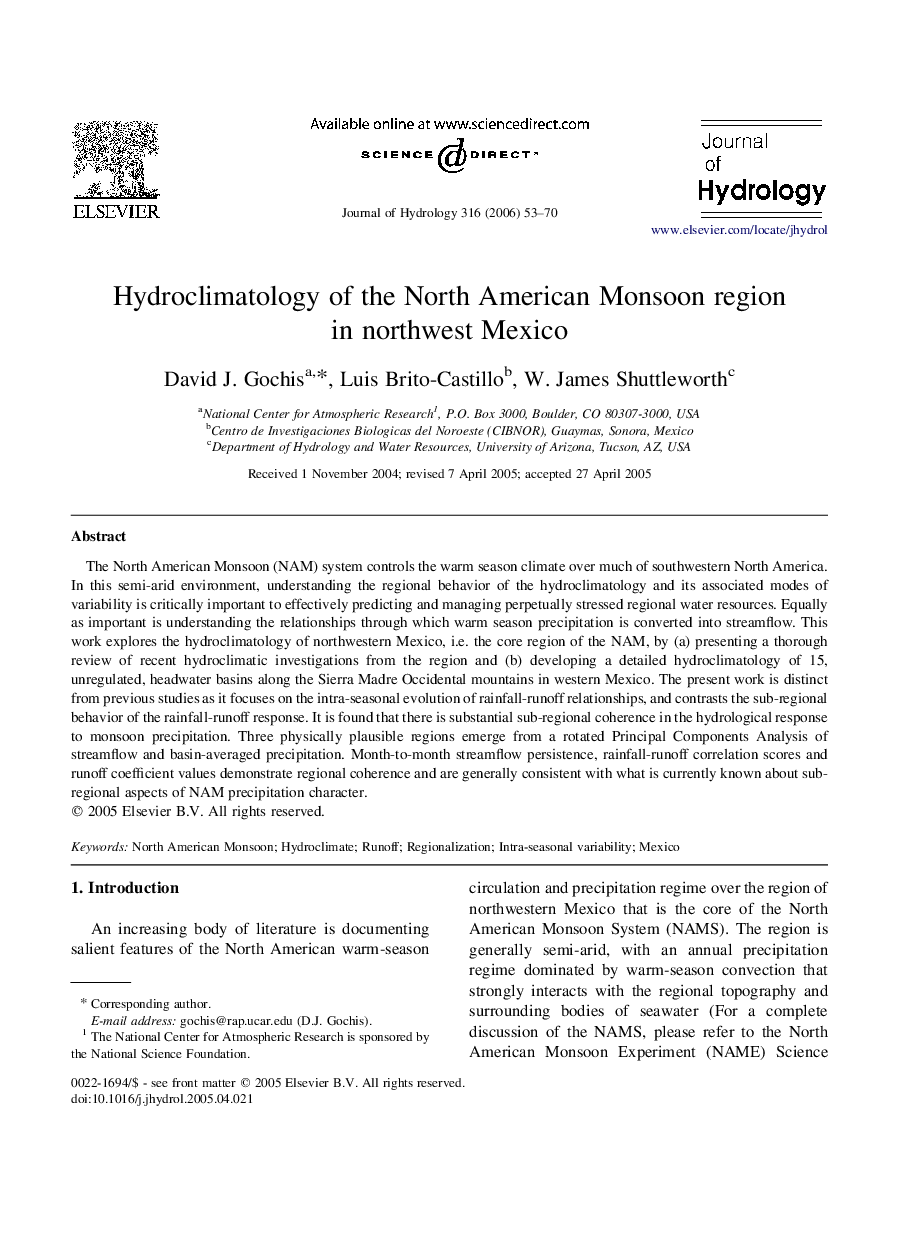| Article ID | Journal | Published Year | Pages | File Type |
|---|---|---|---|---|
| 4580895 | Journal of Hydrology | 2006 | 18 Pages |
The North American Monsoon (NAM) system controls the warm season climate over much of southwestern North America. In this semi-arid environment, understanding the regional behavior of the hydroclimatology and its associated modes of variability is critically important to effectively predicting and managing perpetually stressed regional water resources. Equally as important is understanding the relationships through which warm season precipitation is converted into streamflow. This work explores the hydroclimatology of northwestern Mexico, i.e. the core region of the NAM, by (a) presenting a thorough review of recent hydroclimatic investigations from the region and (b) developing a detailed hydroclimatology of 15, unregulated, headwater basins along the Sierra Madre Occidental mountains in western Mexico. The present work is distinct from previous studies as it focuses on the intra-seasonal evolution of rainfall-runoff relationships, and contrasts the sub-regional behavior of the rainfall-runoff response. It is found that there is substantial sub-regional coherence in the hydrological response to monsoon precipitation. Three physically plausible regions emerge from a rotated Principal Components Analysis of streamflow and basin-averaged precipitation. Month-to-month streamflow persistence, rainfall-runoff correlation scores and runoff coefficient values demonstrate regional coherence and are generally consistent with what is currently known about sub-regional aspects of NAM precipitation character.
